Metadata for the Future of Space Exploration

Metadata for the Future of Space Exploration
Daina Bouquin
Harvard-Smithsonian Center for Astrophysics
daina.bouquin@cfa.harvard.edu
Semantics
The relationships between signifiers
and what they stand for in reality.
How we understand what something means.
Lexicon
Vocabulary of a person, language, or branch of knowledge.
(contains the signifiers)
Mission
- an important, complex assignment.
- a strongly felt aim, ambition, or calling.
- a body of people who perform a service.
Sometimes all three
- an important assignment
- a strongly felt aim, ambition, or calling.
- a body of people who perform a service.
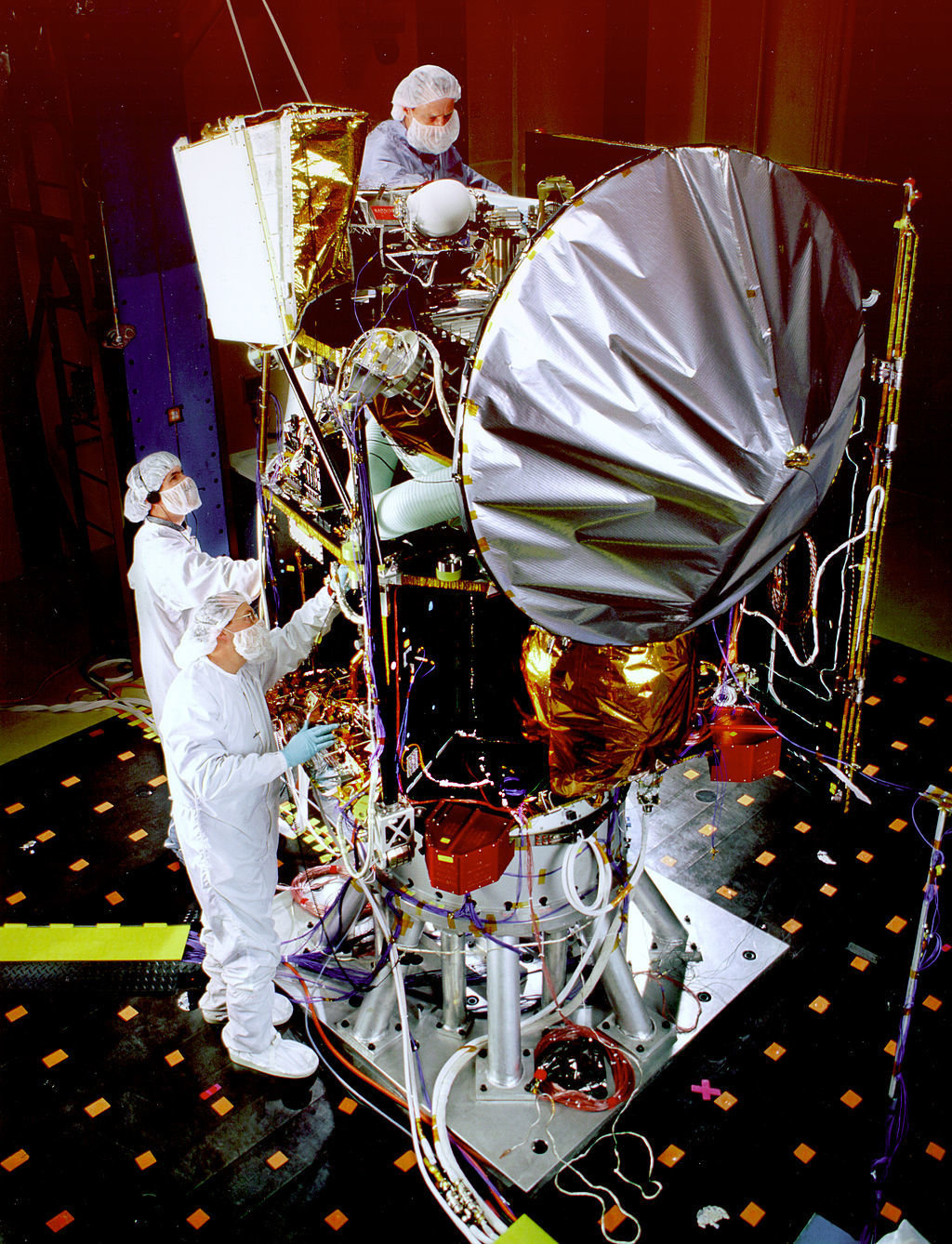
Mars Climate Orbiter undergoing acoustic testing. (1998). NASA.




September 7, 1999
This is the only image acquired by the Orbiter.
What does this image mean?
Who would I ask?
Will it ever mean something else?

NASA/JPL/MSSS

NASA/JPL/MSSS
This image doesn't mean anything on its own.
We need context.
We need to know the story about the MCO Mission.
We need to know where this image came from.
People need to be able to learn from it.
Metadata
Mechanisms for modeling relationships between the information gathered from contextual sources.
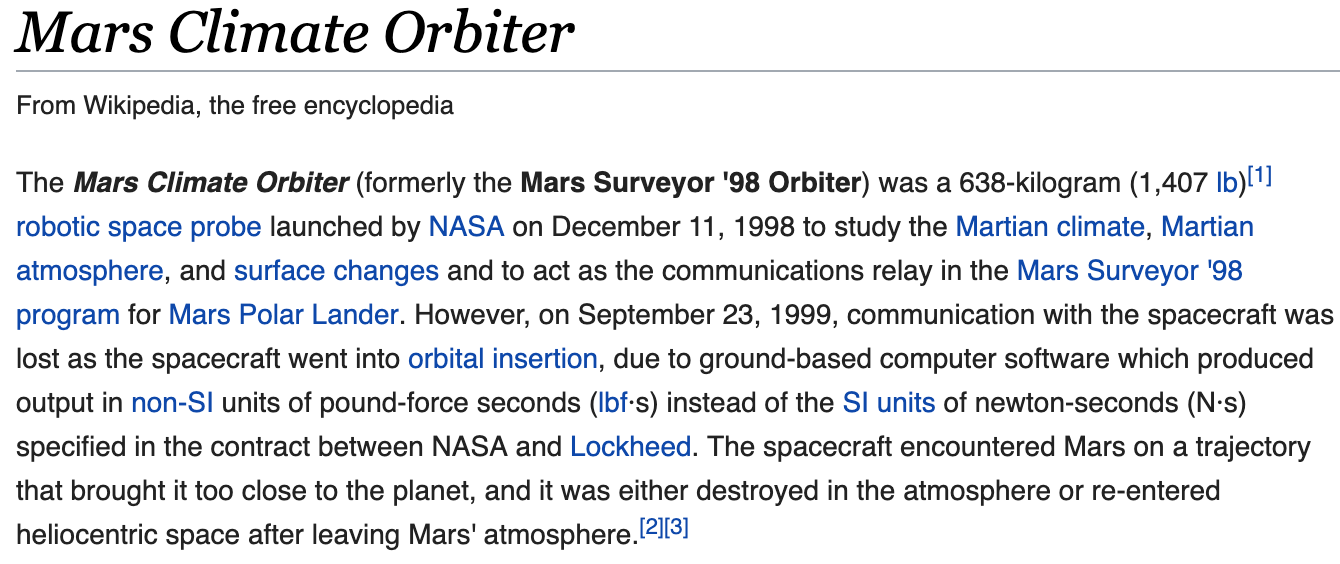
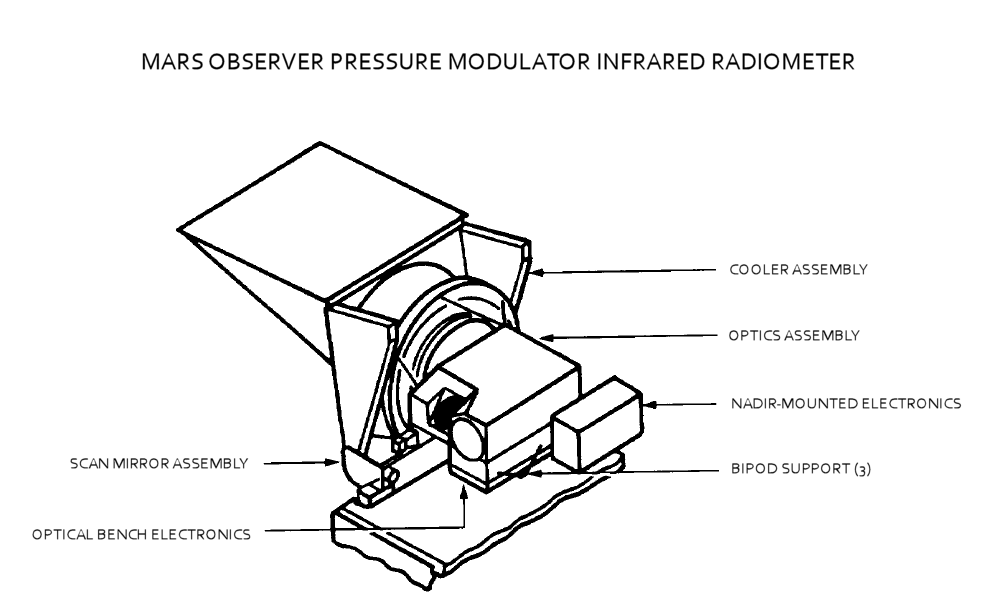
Human readable
metadata has limited functionality.

Signifiers mean different things to different people.
Search engines rely on machine-actionable metadata.


Why does this page come up first?
Why does this search return a knowledge panel?
space.com has great metadata.

Wikipedia does too.
https://en.wikipedia.org/wiki/Satellite


https://www.wikidata.org/wiki/Q26540
We need open, machine-actionable metadata to define and connect
all parts of a mission:
Hardware
Software
Data
People
This gives people the context and functionality they
need to learn from past missions.

Making space mission metadata more useful
MetaSat has three primary components:
-
MetaSat Vocabulary = Lexicon
-
JSON-LD Example schemas = Semantics
-
MetaSat Crosswalks = Translations
Our initial scope is SmallSats:
minimal resources means reliance on
past knowledge is even more essential
MetaSat Vocabulary
- Unique concepts that describe spacecraft, missions operations, ground stations, and more.
-
Each concept in the MetaSat Vocabulary has a unique, permanent URI that can be used for:
- Search Engine Optimization (SEO)
- Federated search across platforms via APIs
- Linked data applications and schemas that use any format of the RDF data model
- Each concept also has a definition, which can be a starting place for people who are unfamiliar the field's lexicon.
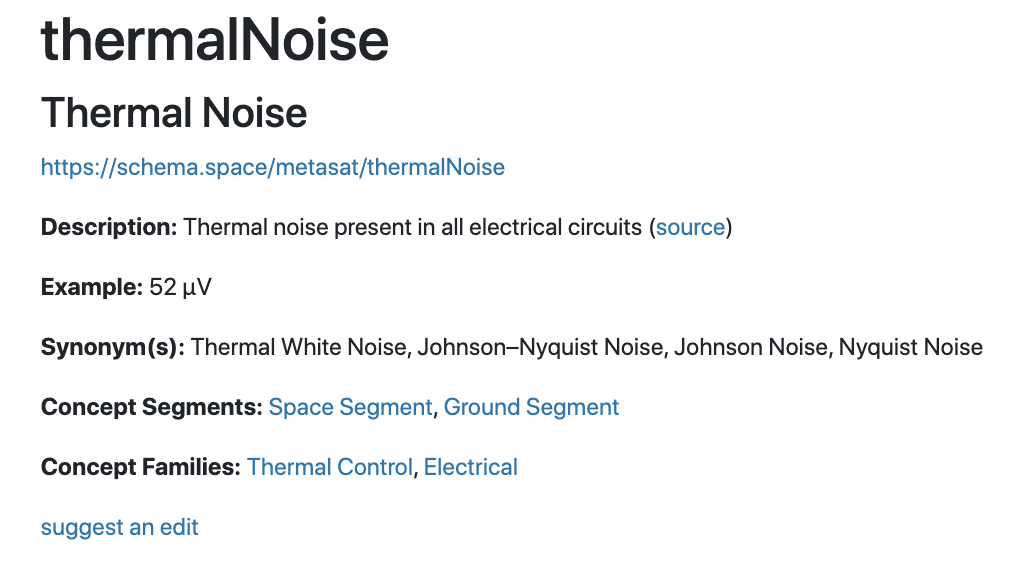
MetaSat Vocabulary
- MetaSat's vocabulary is not hierarchical
- MetaSat's vocabulary is flat, but we have grouped concepts into two types of categories that we hope are useful— these groupings should be treated as recommendations
-
Concept Segments - collections that are related to a specific phase of a space mission
- e.g., Space Segment; Ground Segment
-
Concept Families - collections that are conceptually related
- e.g., Communications; Propulsion; Thermal Control
-
Concept Segments - collections that are related to a specific phase of a space mission

MetaSat Example Files (JSON-LD)
-
Example implementations of the MetaSat vocabulary.
-
Our examples are written in JSON-LD
-
JSON-LD is a highly flexible form of RDF that is built to be easily human-writable and machine-actionable.
-
JSON-LD allows MetaSat to interoperate with other vocabularies using @context
-
-
The examples files combine our vocabulary with structure, and give recommendations for how the concepts relate to each other.

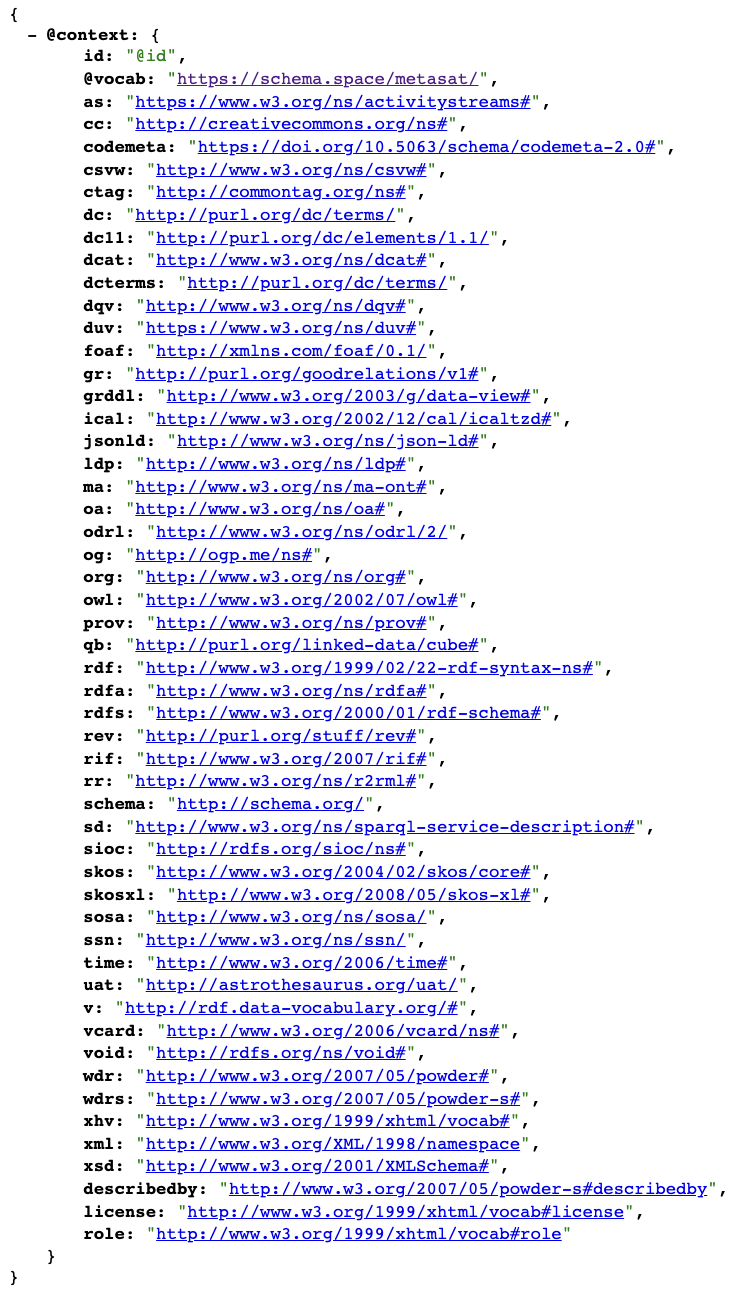
@context is extensible and allows you to use MetaSat along side other externally defined standards
These snippets include high-level descriptions of an attitude control system using both MetaSat and schema.org


We can identify software and data too.
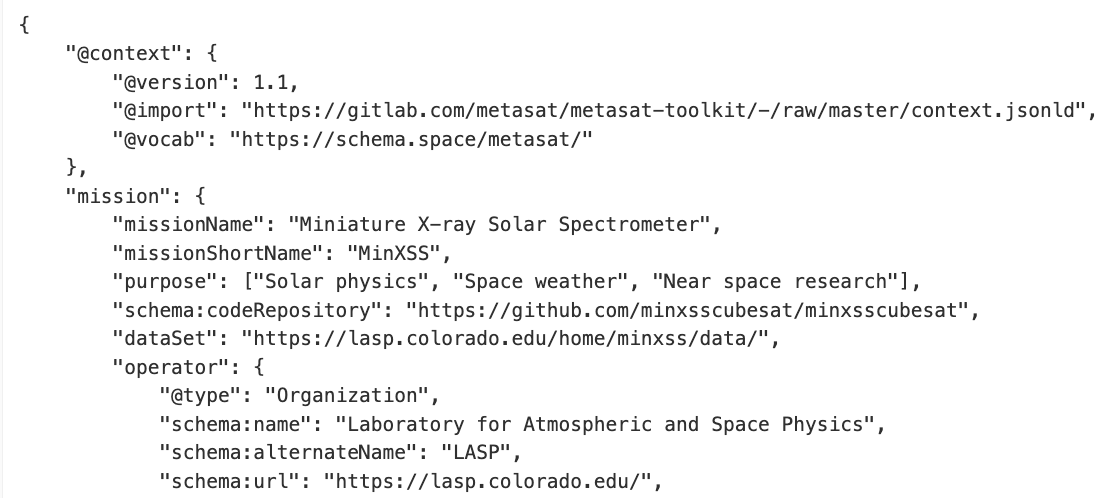

You can also contextualize papers or bibliographies
(preprint about the spacecraft)

(preprint about the instruments)
MetaSat Crosswalks
-
A crosswalk is a table of equivalencies for converting metadata from one vocabulary into another.
-
Our crosswalks, in combination with our decision to develop JSON-LD examples, will allow MetaSat users to combine different vocabularies into a single document, or convert documents into other RDF syntaxes without losing any information.
Thermal Noise



Early Adopters & Key Collaborators
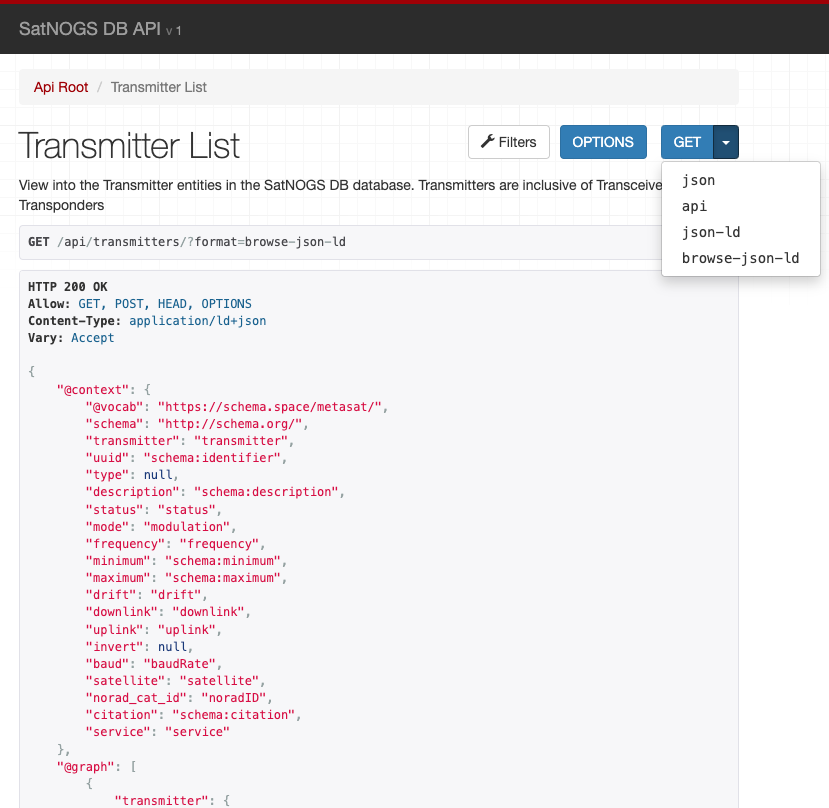


First to fully implement MetaSat on the APIs associated with SatNOGS
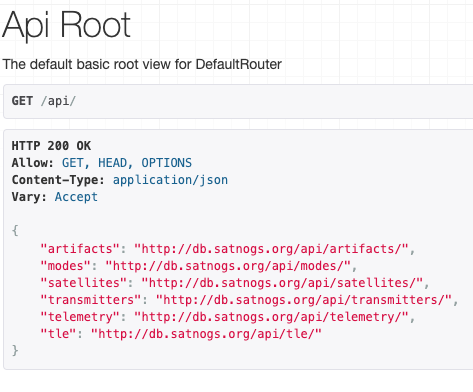
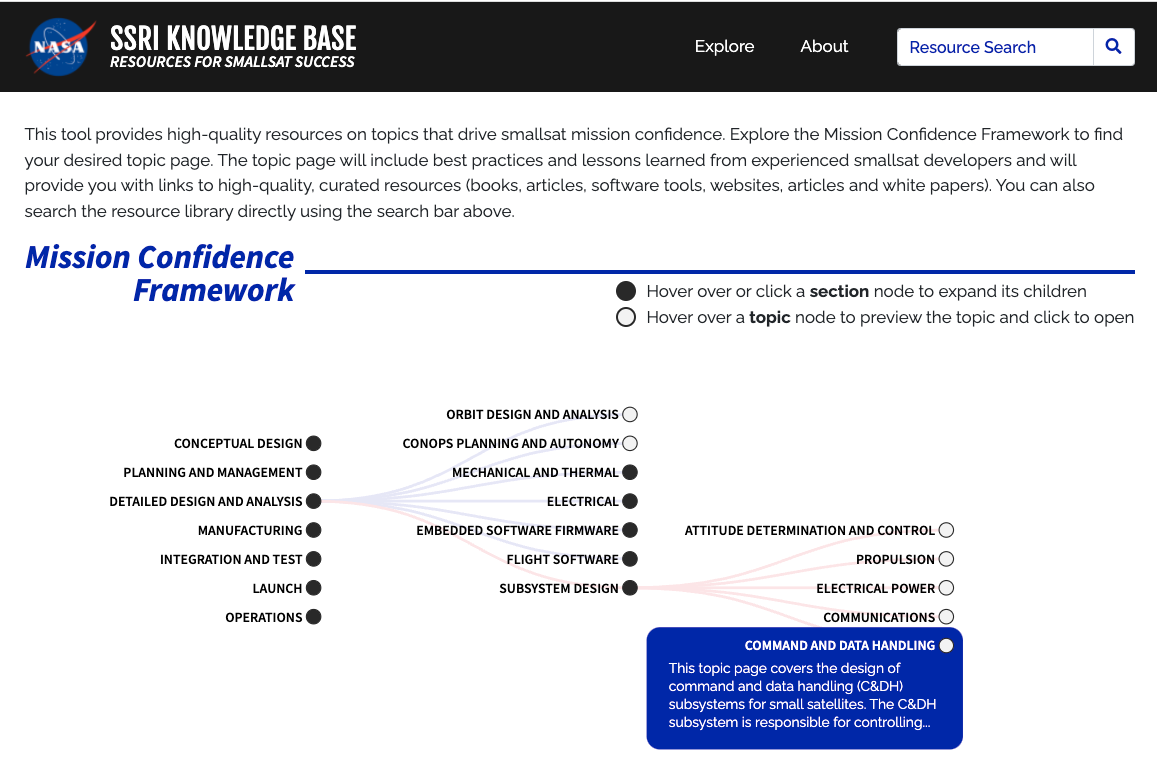
Space Act Agreement pending final approval
(it has taken over two years to get the SAA done)
MetaSat uses:
- Glossary
- SEO
- Resource tagging
Early Adopters & Key Collaborators
Early Adopters & Key Collaborators
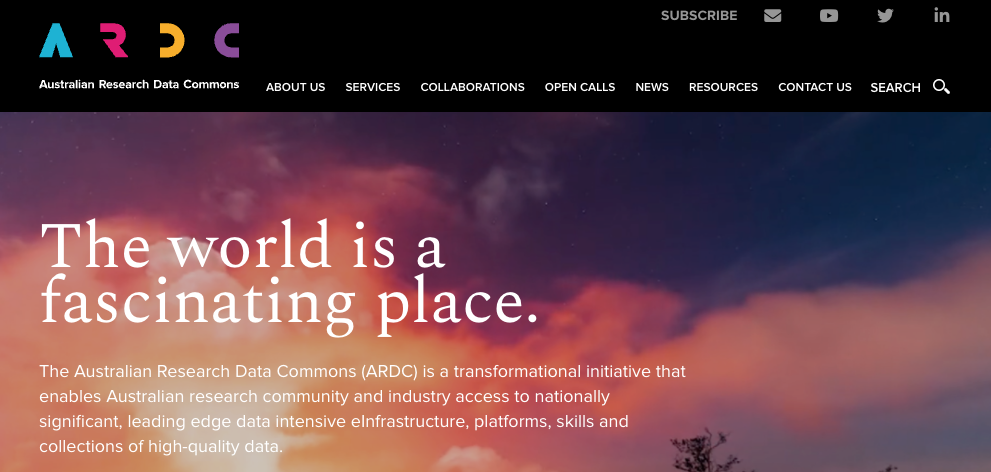
The Australian Research Data Commons has agreed to
host MetaSat, provide us an API, and give us access to tools to allow us to develop and maintain different serializations.
(ARDC also hosts the UAT - we cannot say enough positive things about the ARDC!)
MetaSat is a community-driven project
because the lexicon needs to evolve.
We are in the process of establishing a Steering Committee
Find the project on GitLab
Making something "open"
doesn't make it accessible.
Taking full advantage of tools like MetaSat is continuous work.
Metadata changes over time and needs to be maintained.
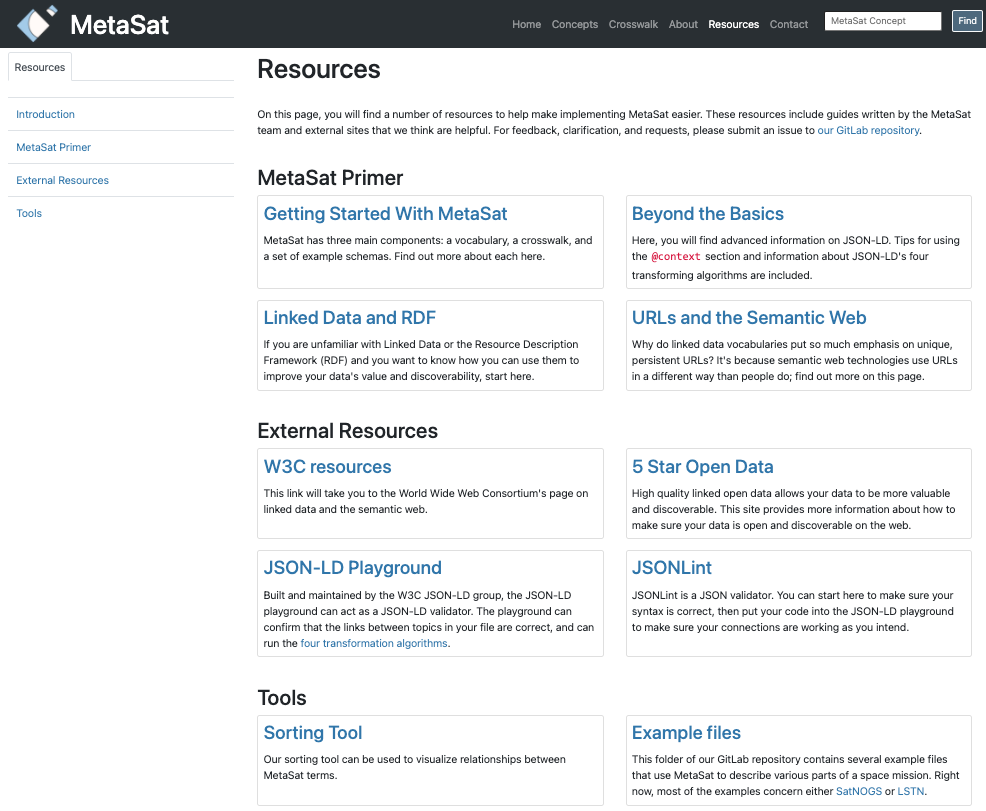
We need to develop resources and tools that make adoption simpler.
Funders like NASA need to invest in people and tools
that support the adoption
and maintenance of
metadata infrastructure.
Thank you, Daniel Chivvis, our current MetaSat Curator.
Metadata for the Future of Space Exploration
By Daina Bouquin
Metadata for the Future of Space Exploration
- 743



